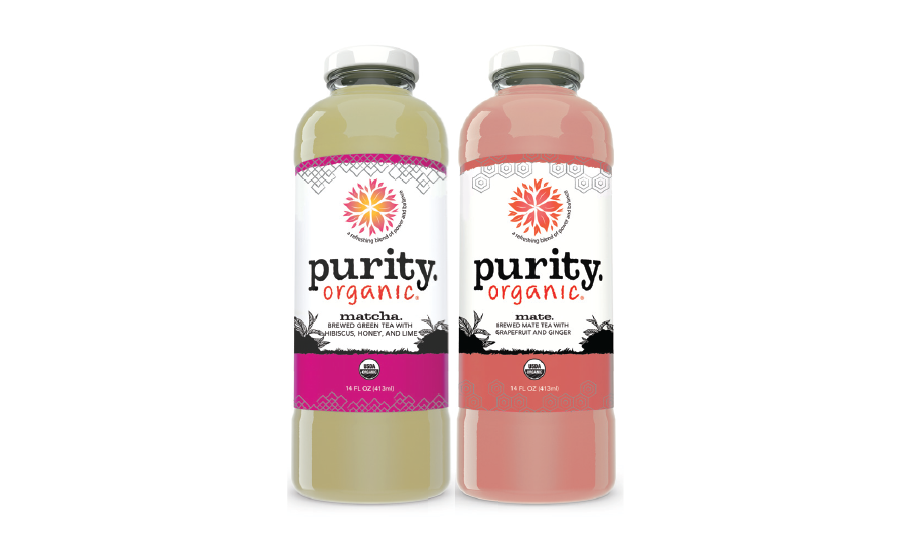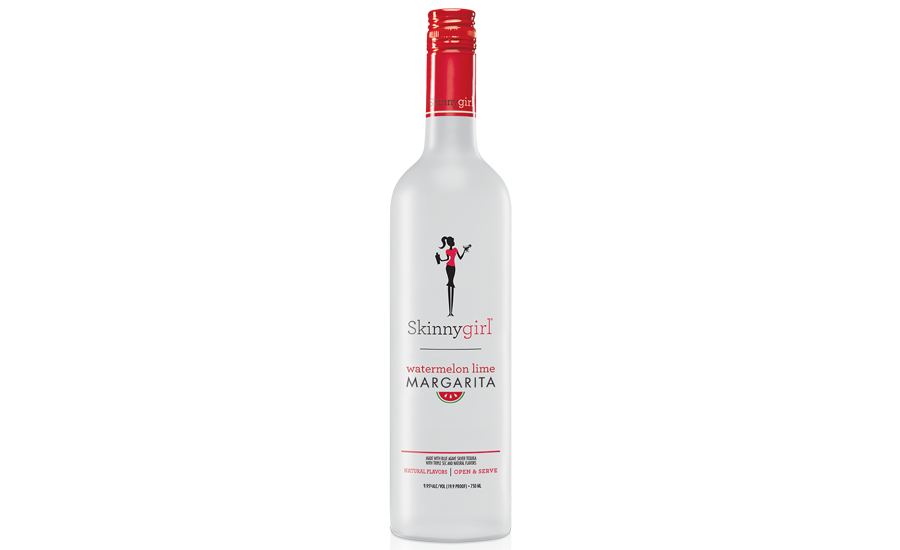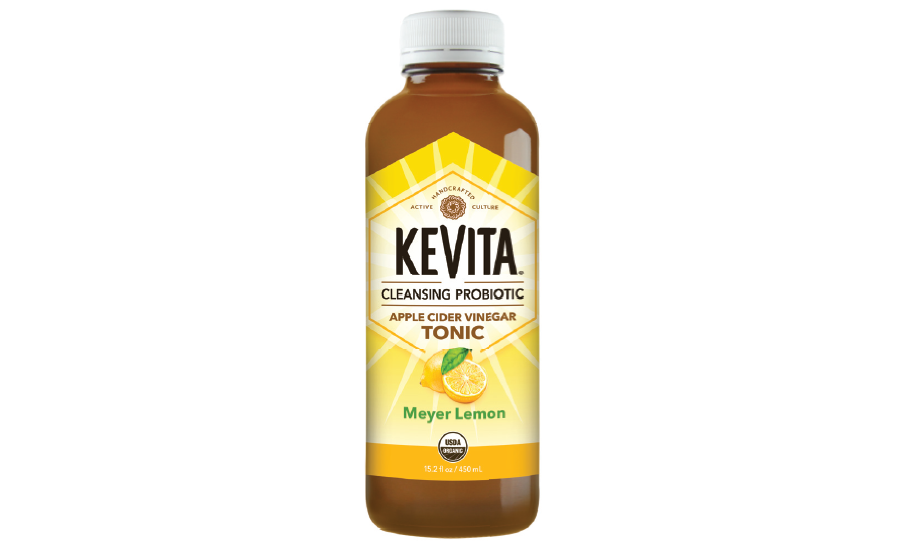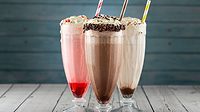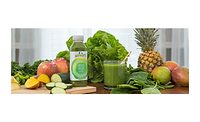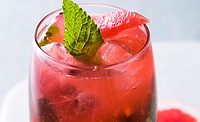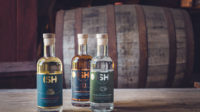Although a tidal wave of new flavors have been flooding the market, staple flavors, like citrus, have held their ground, according to experts. The two most popular citrus options, lemon and orange, remain solid competitors against newer fruit entrants in the market.
“Lemon, orange and lime are very popular in bottled water and tea, both still and carbonated,” explains Colleen Roberts, director of sales for South Plainfield, N.J.-based Favor Dynamics. “The consumer is drinking more flavored water and tea as healthier options to replace high-sugar drinks. Although the consumer looks for innovative flavors in their beverages, they do not replace the comfort of good old-fashioned citrus basics.”
Beloit, Wis.-based Kerry Ingredient’s Ton Mesters, business development of natural products, echoes similar sentiments. “Citrus flavors have enjoyed continued growth in retail and foodservice channels,” he says. “Consumers seek provenance and authenticity from citrus flavors and other citrus ingredients.”
In fact, in Beverage Industry’s 2016 New Product Development Outlook survey, respondents indicated the popularity of citrus flavors in their beverage products with 56 percent indicating that lemon was the a top-used flavor in 2015, and 47 percent using orange flavors in their formulations. Additionally, respondents highlighted orange (16 percent) and lemon (14 percent) as two of the Top 10 selling flavors in 2015.
For 2016, respondents anticipated that lemon will be a top-selling flavor again in 2016.
“Citrus flavors are used to enhance the taste and aroma of citrus juice-containing beverages, or to create the taste in [ready-to-drink] (RTD) teas, flavored waters and spirits,” explains Anton Angelich, group vice president of marketing for Virginia Dare Extract Co., Brooklyn, N.Y. “Product developers, in keeping with the consumer demand for natural ingredients, are seeking more natural, organic and organic-compliant citrus flavors.”
‘Green’ concerns
With citrus ingredients remaining a staple in nearly every beverage category, Flavor Dynamics Inc.’s Roberts notes the one instance when “going green” is not beneficial. According to Roberts, citrus greening remains a concern for suppliers of these ingredients.
According to the Florida Department of Agriculture and Consumer Services’ website, Huanglongbing (HLB), which also is known as citrus greening, was first reported in the United States in 2005 in south Miami-Dade County. The website notes that HLB is one of the most serious citrus diseases in the world. “[HLB] is a bacterial disease the attacks the vascular system of plants,” the website states. “Once infected, there is no cure for the disease, and in areas where the disease is endemic, citrus trees decline and die within a few years.”
Science Daily highlighted the continuing issue in an April article titled “Florida citrus growers: 80 percent of trees infected by greening.” The article outlines a survey conducted in March 2015 by the University of Florida Institute of Food and Agricultural Sciences in which 76 citrus growers, operating approximately 30 percent of the state’s citrus acreage, were surveyed about the effects of greening on their yields. According to the article, respondents indicated that greening reduced their yield by about 41 percent.
“Surveyed growers said, on average, 90 percent of citrus acreage and 80 percent of trees in their operations had been infected, on average, in any given operation in Florida,” the article reports. “… Florida has lost about $7.8 billion in revenue, 162,200 citrus acres and 7,513 jobs to citrus greening since 2007, according to UF/IFAS researchers. Orange production dropped from 242 million to 104 million boxes in 2014, UF/IFAS researchers say.”
Kerry’s Mesters says that citrus greening is a major concern for the industry because it impacts the quality of citrus fruits available, and highlights that orange and grapefruit, in particular, have been impacted.
“We collaborate with key research organizations, universities and citrus growers to understand the external factors impacting the quality of citrus fruits,” Mesters explains. “The results of this research help us develop flavor solutions with authentic and consistent taste.”
Flavor Dynamic’s Roberts notes that these deficits have resulted in increased prices for raw ingredients, as well as the products, like extracts, that are created from them. However, this has not deterred beverage formulators from utilizing the flavors in their formulations.
“The citrus greening has posed a challenge to our flavor chemists because of increased pricing and decreased availability,” she says. “[A]s the crops suffer from citrus greening, availability and higher prices [are] making it more difficult to create cost-effective flavor profiles for beverages, and we find our customers turning toward more creative flavor blends.”
Complementing all categories
Heather Young, food scientist at Mother Murphy’s, Greensboro, N.C., notes that citrus flavors hit on consumers’ nostalgia, which continues to keep them relevant in the marketplace.
“When the weather heats up, the popularity of citrus flavors in beverages becomes more prominent,” she says. “Lemonade is a very popular beverage in the summer months. Lemonade has an element of nostalgia when we remember back to our first lemonade stand or seeing neighborhood kids selling lemonade.”
Kerry’s Mesters adds that lemonade is a citrus beverage that is gaining in popularity in quick-service restaurants.
Young notes that as a result of its popularity, tea-and-lemonade blends have continued to gain traction. “Tea plus lemonade has become more commonplace,” she says. “In the future, we will see this expand to other tea varieties. Green, oolong, white and other mixed teas will meet lemonade in a refreshing combination.”
For example, Fort Pierce, Fla.-based Natalie’s Orchid Island Juice Co. launched Natalie’s Handcrafted Lemonade Tea this spring. The lemonade tea is crafted with four ingredients: lemons, brewed black tea, pure cane sugar and water, the company says. The ready-to-drink (RTD) citrus juice drink contains 20 percent lemon juice, it adds.
However, lemonade also is being blended with other summertime flavors. The Farmer’s Cow, Lebanon, Conn., added a Watermelon Lemonade to its summer lineup.
On the other hand, other citrus flavors are continuing to proliferate in RTD teas. Taking the concept of black tea with lemon a step further, San Francisco-based Purity.Organic added a new line of super-premium teas, featuring Brewed Mate Tea with Grapefruit and Ginger and Brewed Matcha Tea with Hibiscus, Honey and Lime flavors, among others.
Flavor Dynamics’ Roberts notes that lemon, lime, orange and grapefruit continue to proliferate as flavorings in alcohol and non-alcohol beverages alike.
“Lemon, lime and orange are the backbone of the citrus flavors in carbonated beverages,” Roberts says. “They are also the foundation of flavor varietals in water, teas and alcohol and continue to be in many other new beverages as they are introduced to the marketplace.”
Noting the popularity of citrus in carbonated waters and alcohol beverages, Boston-based Boston Beer Co. included two citrus flavors in its Truly Spiked & Sparkling lineup, which launched this summer. The lineup also includes three flavors: Colima Lime, Grapefruit & Pomelo, and Pomegranate.
Mother Murphy’s Young notes that although both alcohol and non-alcohol beverages utilize citrus, an increasing number of alcohol mixers and RTD alcohol beverages have launched with citrus flavors.
“Citrus flavors compliment alcoholic beverages because they take the ‘edge’ off [of] high-proof spirits and create a nice, refreshing beverage that is favored by a broad consumer base,” she says. “The increased popularity of mojito, Margarita, Moscow mule mixers and ready-to-drink cocktails keep citrus flavors and ingredients at the forefront of consumer demand.”
For example, Deerfield, Ill.-based Beam Suntory Inc.’s Skinnygirl Cocktails announced the addition of Skinny Girl Watermelon Lime Margarita, a flavored RTD cocktail featuring a blend of watermelon and lime flavors, the company says.
Although the traditional flavors continue to gain consumers’ favor, Virginia Dare’s Angelich notes that their palates also are evolving. “As the American palate becomes collectively more sophisticated, we are seeing increased interest and demand for Meyer lemon, tangerine, blood orange, mandarin, clementine and other less-common citrus flavors,” he says.
Kerry’s Mesters also notes the increasing interest in more exotic citrus flavors and adds that yuzu, pomelo, kumquat and calamansi lime also are becoming popular citrus options. He adds that interest in blends of citrus with other ingredients or flavors also has gained interest from consumers and beverage-makers alike.
“Citrus flavors are both used stand-alone or blended with other fruit, vegetables and citrus flavors,” he says. “Growing in popularity is citrus with herbs and spices, such as lemon and basil or lime and ginger; citrus with other fruits, like kiwi and lime; citrus and vegetable flavor, such as lime and cucumber; and last, but not least, citrus with sweet, like lime and honey.
“Consumers are seeking products that are fresh and invigorating,” he continues. “They want products that make them feel good. Citrus has a healthy halo and provides freshness and authenticity to beverages.”
Healthy a-peel
Consumers know that vitamin C is important when fighting off a cold, and many turn to beverages like orange juice to provide them with the extra nutrients when they’re starting to feel under the weather. However, consumers also are living more health-conscious lifestyles, which experts say also is benefiting citrus ingredients.
“What appears apparently different and noticeable lately is that consumers are less interested in having the latest novel or exotic flavor or taste, but having their concerns about healthy, natural, safe and clean-label beverages addressed,” Virginia Dare’s Angelich says. “Beverage companies are focused more on ‘getting the product right.’
“Consumer purchase decisions are being based more and more on choosing products that have clean and simple labels, are natural or organic, are free from various specific consumer concerns, such as allergen free, non-GMO, gluten free, and are healthy and good for you,” he continues. Citrus products have been traditionally well perceived as being natural and good for you, hence the addition of orange or other citrus in beverages lends itself to making a beverage have a healthy image for the consumer.”
Flavor Dynamics’ Roberts notes a similar trend. “Lemon, lime, orange and grapefruit continue to be popular flavors for tea, bottled water and alcohol. The only change we see is the greater demand for all-natural flavors and non-GMO options,” she says.
Looking ahead, Kerry’s Mesters says that citrus will continue to resonate with consumers, partially because of the ingredients healthfulness.
“Consumers associate citrus fruits as wholesome, healthy and good for you. Juice naturally delivers nutrients like fibers, vitamins and minerals,” he says. “Citrus will continue to be very popular in beverages since it has a healthy halo. Citrus is authentic. It is one of the most accepted and popular taste profiles and can be easily combined with other fruits, vegetables, herbs and spices.”
